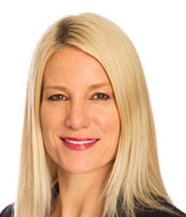


Tobacco Control: Australia's Role
Transcript of Witness Seminar
Introduction
Building the case for tobacco control
Producing, and Responding to, the Evidence
Campaigning for Tobacco Control
Economic Initiatives in Tobacco Control
The Radical Wing of Tobacco Control
Revolutionary Road
Tobacco Industry Strategies and Responses to Them
Campaign Evaluation
Managing Difficulties in Light of Community Consensus
Radical Wing Again
The Process of Political Change
Tobacco Campaigns Up Close
A Speedier Pace of Change
Political Needs and Campaign Strategies
Litigation and its Impacts
Insights from Tobacco Control
Tobacco Control in Australia in International Perspective
Appendix 1: Statement by Anne Jones
Endnotes
Index
Search
Help
Contact us

David Hill: At some point, of course, theyíve gone very public on a lot of matters including pro-social issues, and not just being a doctorís union. Was tobacco one of the first issues on which it went across the line?
Rohan Greenland: I think so, but it was before my time. One of the previous presidents had dabbled, but it was Brendan who emphatically picked it up and ran with it, particularly at critical times such as with warnings on cigarette packs. At the Press Club he famously held up in one hand a packet of Ratsak, with its warning that it kills rats and mice, and a cigarette packet in the other, where you couldnít see any warnings. He was terrific, and did it with great passion.
Kathy Barnsley: Iíd like to pay tribute to the Heart Foundation for bringing James Repace[205] to Australia, and particularly to Tasmania. He made a huge impact and turned around the union movement which had been opposed to doing anything about smoking (in the workplace). He completely turned around the union officials and that turned around the debate on smokefree areas.
Lyn Roberts: Mike, you were probably head of the Heart Foundation Education Committee with Judy Finn[206] at that time. And I think he (James Repace) went to every state.
Mike Daube: No I donít think I was at that stage. I think Judy gets credit for that.
While talking heart and strong CEOs, and the names of some of them escape me. Cancer at various stages, but Heart Foundation has always had a leading role right from the days of Ralph Reader.[207] Itís always been strong in this area and has had some great people working for it.
Lyn Roberts: Some of the early things that the Heart Foundation started doing about passive smoking, and people such as Paul Magnus, whoís retired now, have been important.
Simon Chapman: Thinking about other people who came out. Stan Glantz came out several times and did fantastically well in the media on a variety of issues.
Do you remember the Winston man[208] who came out? Heís gone over to the dark side again.
And there was the woman, Janet Sackman.[209]
Ron Borland: Jeff Wigand.[210]
Kathy Barnsley: Victor de Noble.[211]
Trish Cotter: In the early days I remember Kjell Bjartveit[212] coming and talking about the ban on tobacco advertising in Norway.
Ron Borland: Another very important visitor was Judith Mackay.[213]
David Hill: We should try to enrich this list of people whoíve come out to Australia and had an important strategic impact.
Ann Westmore: Talking of strategic impact, today has been a wonderful day in bringing out some important stories and lessons that could benefit a wider audience. Itís a wonderful achievement of VicHealth to facilitate this Witness seminar and Carolineís done a terrific job, managing the whole thing from behind the scenes. Weíll now cross to Jerril for some final words.

Jerril Rechter, CEO of VicHealth. Image courtesy of VicHealth.
Jerril Rechter: Iím sorry I couldnít be here this morning to thank everyone for coming, Itís great to be able to say it now, having heard people share their incredible stories.
Iíve heard a couple of comments about how some of you may have to go back into therapy after reliving the trauma. Others had a twinkle in the eye, remembering the journey. Others have heard about things that were happening that they were unaware of.
So a warm thank-you, including to Ann who has been a pleasure to work with. Itís been a long day, but itís taken time to unravel the many layers of the journey.
 |
Witness to the History of Australian Medicine |  |
© The University of Melbourne 2005-16
Published by eScholarship Research Centre, using the Web Academic Resource Publisher
http://witness.esrc.unimelb.edu.au/171.html